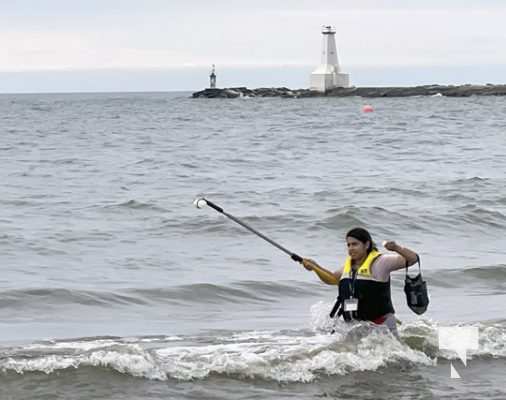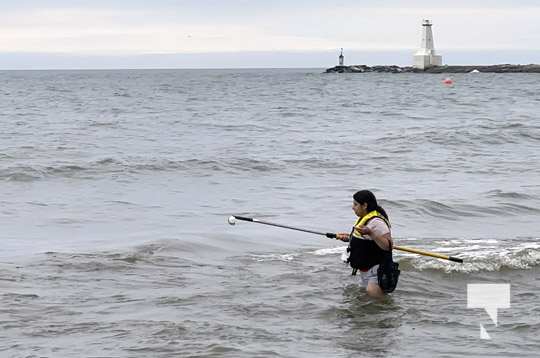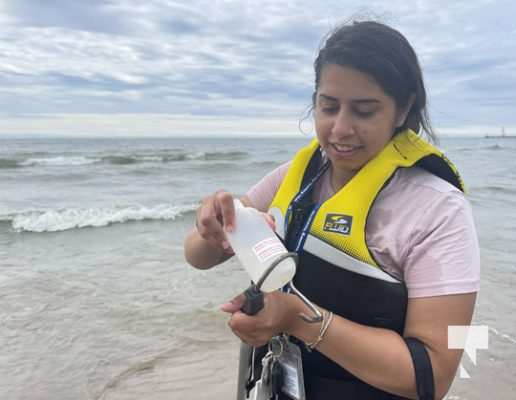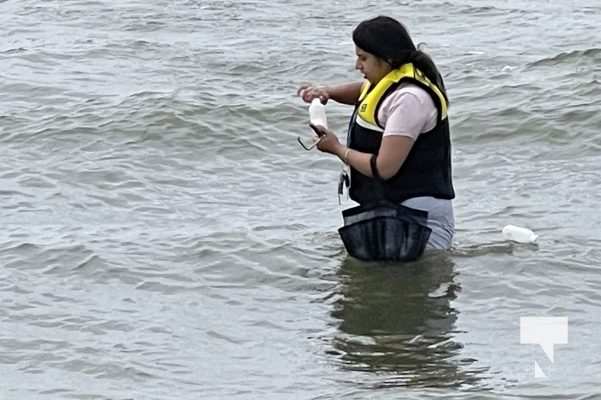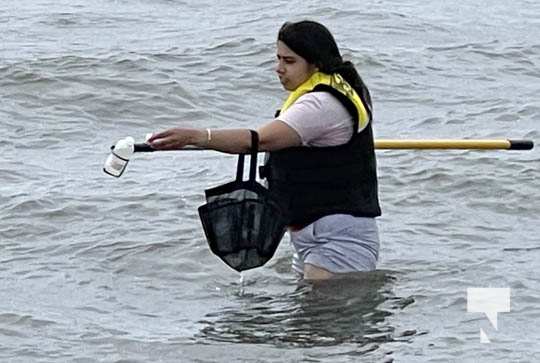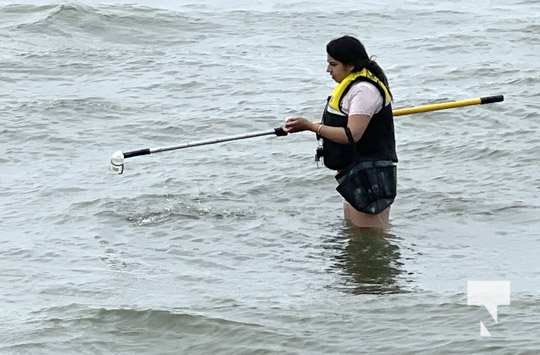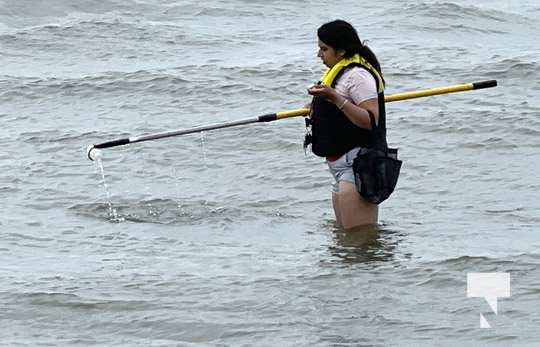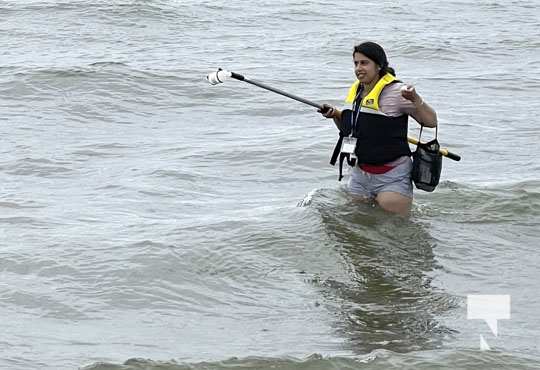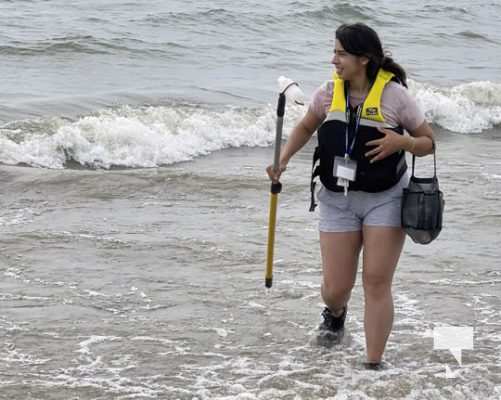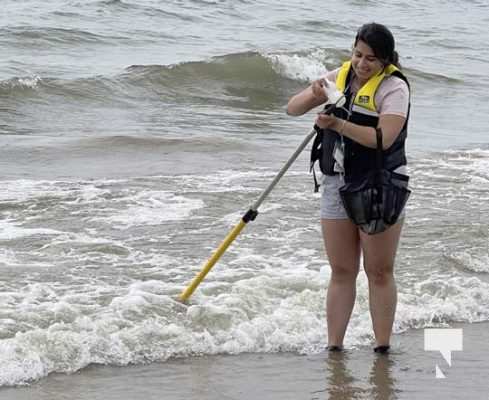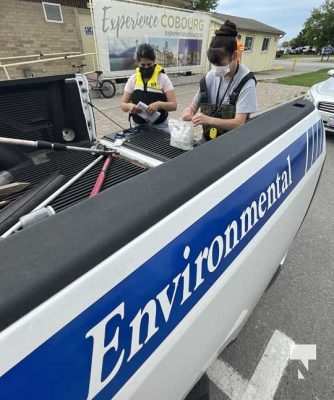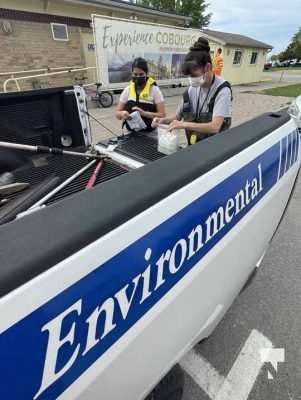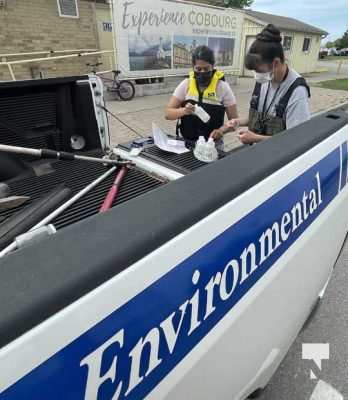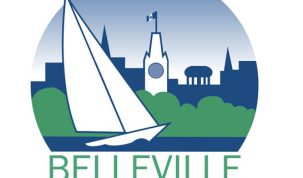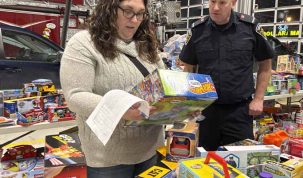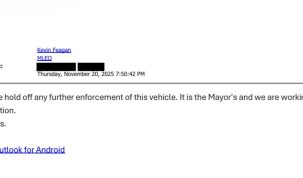Haliburton Kawartha Pine Ridge District Health Beach Sampling Student Jasmine Kaler had a bit of difficulty on Monday, July 12, 2021 taking the five beach samples from Victoria Beach in Cobourg due to high waves.
The Health Unit says the water samples are taken in two metre depths or the deepest point within the swim area.
During summer months, the Haliburton, Kawartha Pine Ridge District Health Unit regularly tests the water at approximately 45 public beaches in Northumberland County, Haliburton County and the City of Kawartha Lakes. This includes regular sampling at Cobourg’s Victoria Park Beach.
Water samples will be tested for E.coli to determine if local beaches are safe for public use. The Health Unit will update beach water test results by late Thursday or early Friday each week. People can find results on the Health Unit website. Warning signs will also be put up at beaches when it’s unsafe to swim.
The Health Unit uses a three-colour system to report beach water test results:
Green means a beach is open/safe for swimming.
Yellow is a warning that high counts of bacteria may be present in the water and swimming is not advised at this time as it may lead to illness. If people choose to swim, they should avoid dunking their heads or swallowing water.
Red means a beach is closed due to extremely high levels of bacteria that make it unsafe for swimming.
Beach goers are encouraged to follow any warning signs to protect their health. A higher bacteria count in the water can increase the risk of getting eye, ear, nose or throat infections, or make people sick leading to stomach cramps and diarrhea.
Beach water can become contaminated with bacteria for many reasons, including seasonal surface run-off into lakes and rivers, rainfall events, warmer water temperatures in the summer, the number of bathers, and other sources of contamination.
People can also be watchful for other warning signs that could affect beach water quality. High levels of bacteria can persist for up to 48 hours after a heavy rainfall. High winds or wave activity can drive up bacterial counts, as can the presence of a large number of birds, such as geese or seagulls nesting near the beach, whose fecal matter can impact water quality.
Like last summer, the Health Unit is also advising people to be aware of not only E.coli, but also the presence of COVID-19. For that reason, the Health Unit suggests the following COVID-19 prevention measures if planning a trip to the beach:
Stay home if you or any member of your family is sick.
Visit a beach closer to your home to reduce travel and the risk of spreading the virus elsewhere. Check with your local municipality about additional COVID-19 restrictions that may apply at a beach and be sure to follow them.
If the beach is extremely crowded, come back when it is less busy or consider doing another fun activity.
Bring hand sanitizer and disinfecting wipes to use at the beach, especially if soap and water are unavailable.
Stay 2 metres apart from others with whom you do not live. Use items like tents, umbrellas, blankets, pool noodles or hula hoops to keep your distance from others. These items can be good visual reminders for children too.
If wearing a mask on land, remove it before going into the water.


